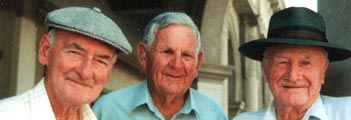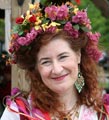   
|
|
|
|
|
Funerals and dementia
Funerals for those who died with advanced dementia.The day before the funeral I had to go visit the funeral home and identify mum's body again - a precaution in case bodies had been mixed up. The funeral has come and gone, but some points for bearing in mind if your loved one has advanced dementia and you are looking at preparing for their funeral. First, the placement of the deceased in the coffin - with advanced dementia the body has already begun to assume the fetal position, so one question the funeral home asked, was that, as they never had a deceased in such an advanced state of dementia before - the funeral home has been around for many, many years, so it is a credit to all those who helped her live so long - they were unable to straighten the legs out so wanted to know whether mum's body should be placed on the back or on the side for the funeral. If placed on the back the legs would be sticking up, but being laid on the side was not common for a funeral. We chose the side for the funeral and they positioned mum's head to be facing more up. This way she looked more like she was a little on her side sleeping or, more precisely, like a lifeless doll. The second funeral difficulty with burying a person who has advanced dementia, is that many of their relatives, particularly the young ones, like grand children, have much difficulty ever recalling them being any other way. So we tried during the funeral to fill that gap of knowledge for those who just couldn't remember, such as how mum read to them, played with them, bought them lollies and icecreams. Our chilren were really upset when their nanna died. Funerals normally fall into one of three types. The first is the paupers funeral - a government burial because no one wants or can afford to bury them - an option if you are really hard up, but often you may not be allowed to go to the funeral nor even be told where the deceased was buried - it depends on the state you live in. The second type of funeral is the public funeral, where ads are placed and people can come along if they want - this is the more traditional funeral. The third type of funeral is the private funeral, where only some people are invited and the funeral notice doesn't appear until after the funeral. With mum, we chose the private funeral because everyone else she had been friends with had died or lived far to far away - by keeping it a private funeral, we were also able to focus on having it as a very personal funeral, we didn't want an organist (a stranger) nor any of the funeral staff there. As mum loved things very colorful, we chose a flower arrangement that was really colorful and some of us wore cothes that were colorful as well. Everyone in the family got to say goodbye to mum, with almost all of us preparing a brief speech about what mum had meant to us - there were only seven of us there. Five of her grandchildren and Carolyn and myself. Being mum's son, I prepared the longest talk and focused on how we didn't want her to leave us, how she had been there for me, how she had loved her grandchildren, what she did for them and ended with a talk about her being with the heavenly father, with every need now met. We all cried, we all dropped flower petals on her coffin. During the funeral we all viewed her body several times. With the advanced dementia, using best clothes for the funeral would prove very difficult, particularly as her size had diminished so much (we didn't know what size she was) and that we had been buying more track type pants and tops and easy put on clothes for the nursing staff to dress her - so the funeral home opted to cover mum with a beautiful white sheet with a type of white collar attached to it - she looked absolutely lovely, like an angel - only her arms and head showed. Across the top of the coffin, they had placed a white see throught veil. It was all very nice. It was a good funeral in every respect. Also, please consider sharing our helpful website with your online friends.
|